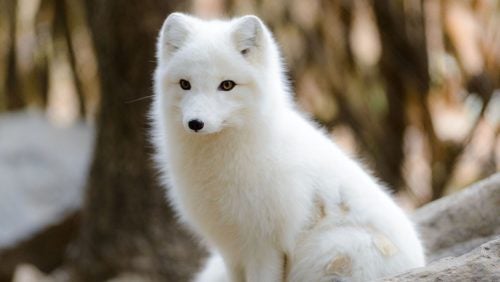The Governance Framework for Arctic Biodiversity
March 29, 2019 by Sang Koo

Biodiversity plays an important role in maintaining the overall health of the Arctic, but climate change poses a major threat as temperature increases have disrupted the region's ecosystem. What legal regime is currently in place to protect the Arctic?
The Arctic is home to more than 21,000 species of mammals, birds, invertebrates, fish, plants, fungi, endoparasites, and microbes spread across three distinct zones (i.e. the High Arctic, the Low Arctic, and the Subarctic), and biodiversity plays a significant role in supporting the overall structure, integrity, and health of each zone.[1] The climate in the High Arctic is so harsh that the region can only support flowers, grass-like plants, and moss.[2] The Low Arctic is home to more than 600 vascular plant species. The subarctic, which is a transition zone, is entirely vegetated.[3] Climate change, however, poses a major threat to Arctic biodiversity, as increases in temperature have markedly disrupted the entire region’s ecosystem.[4] Many species are migrating northward as sea ice and permafrost melt.[5] New oceanic current patterns have developed because of climate change.[6] These changes in Arctic habitats have transformed many species’ food webs and impacted their fertility because they have been relying heavily on sea ice to breed and avoid predators.[7]
The legal regime that could address the problems facing the Arctic is non-binding. It consists of a series of soft law agreements among countries.[8] The regime’s guiding body is the Arctic Council. The Arctic Council is not an international organization, but an intergovernmental forum designed to “provide a means for promoting cooperation…among the Arctic States . . . on common Arctic issues[,] in particular issues of sustainable development and environmental protection in the Arctic.[9]
Along with the Arctic Council, the governance framework for Arctic biodiversity is also dictated by international treaties. Although these treaties are not specifically designed for the Arctic, many of the treaties are applicable in the region because they were signed and ratified by all or some of the Arctic states. Importantly, Arctic states can use these treaties to address critical biodiversity issues through engagement with non-Arctic states, as most of the threats to the Arctic come from outside of the region.[10] The treaties that are particularly relevant to Arctic biodiversity and environmental issues are the Convention on Biological Diversity, Ramsar Convention on Wetlands, UNESCO World Heritage Convention, Convention on the Conservation of Migratory Species of Wild Animals, Agreement on the Conservation of African-Eurasian Migratory Water birds, and Convention on International Trade in Endangered Species of Wild Animals.[11]
Other relevant treaties have narrower focuses: The United Nations Convention on the Law of the Sea (UNCLOS), UNEP Regional Seas Program, Convention for the Protection of the Marine Environment of the North-East Atlantic, and Global Program of Action for the Protection of the Marine Environment from Land-based Activities.[12]
These treaties and international agreements are integral to the current legal regime governing the Arctic’s biodiversity because they influence on the content of Arctic states’ development of domestic environmental laws.[13] The international agreements beget domestic legislations, regulations, and even bilateral agreements between individual Arctic states on environmental and biodiversity issues.[14] For example, In October of 2018, the U.S. became a signatory to the Prevention of Unregulated High Seas Fishing in the Central Arctic Ocean. It is the “first multilateral agreement of its kind to take a legally binding, precautionary approach to protect an area from commercial fishing before that fishing has begun.”[15]
Although critics argue that the current Arctic governance system has too many loopholes and deficiencies like lack of enforcement authority and funding,[16] it may be hasty to conclude that the governance system is ineffective based on a mere three decades of history. However, the entire world should not remain complacent and depend solely on the Arctic states to protect the Arctic. The Arctic is a common heritage of mankind, and its problems require global effort to be fixed.
[1] Conservation of Arctic Flora and Fauna, Arctic Biodiversity Assessment Status and Trends in Arctic Biodiversity 22 (Hans Meltofte ed., 2013).
[2] Kjetil S Grønnestad, What Is the Arctic?, BarentsWatch (Jan. 21, 2016), https://www.barentswatch.no/en/articles/Hva-er-Arktis/.
[3] Joseph F. DiMento, Environmental Governance of the Arctic: Law, Effect, Now Implementation, 6 U.C. Irvine L. Rev. 23, 29 (2016).
[4] Jens Christian Pedersen, Arctic biodiversity under serious threat from climate change, Sci. Daily (Feb. 14, 2014), https://www.sciencedaily.com/releases/2014/02/140214075511.htm.
[5] Id.
[6] Id.
[7] Id.
[8] Linda Nowlan, Arctic Legal Regime for Environmental Protection ix (2001).
[9] Declaration on the Establishment of the Arctic Council, September 19, 1996, 35 I.L.M. 1387.
[10] Elisa Cavallin, Protection of Biodiversity in the Arctic against the Effects of Climate Change: the Role of the Arctic Council, 64 (2017).
[11] Id. at 45.
[12] Id.
[13] Nowlan, supra note 8, at 5.
[14] Id.
[15] U.S. Signs Agreement To Prevent Unregulated Commercial Fishing on the High Seas of the Central Arctic Ocean, U.S. Dep’t of State (Oct. 1, 2018), https://www.state.gov/r/pa/prs/ps/2018/10/286348.htm.
[16] Id.
[17] Nowlan, supra note 8, at 5.

